PI Cognitive Assessment: Ace the Exam & Expand Your Career Horizons in 2025
- Overview
- Test Sections
- Curriculum
- Reviews
Cognitive assessments have taken over the hiring process worldwide, now every company is looking to hire the best fit candidate for their job positions. Do you have what it takes to be the best fit at your next job application? Can you pass the complex hiring exams the companies have put in your path to a better career & a better life?
This is where we come in place, we are here to guide you towards a better future by preparing you for one of the most difficult exam out there – the Predictive Index Cognitive Assessment. We will help you analyze each section of the test & prepare you so that you can breeze through the test & maximize your score. If you are ready let’s take a look!
What is Predictive Index Cognitive Assessment?
The Predictive Index Cognitive Test is a 360° cognitive assessment designed by Predictive Index, this test used to be known as Predictive Learning Indicator (PLI / PI LI). This test analyze the applicant in 3 key areas covering workplace reasoning. These 3 key sections are: Verbal, Numerical & Abstract Reasoning. Exceling at all 3 are needed as the combination directly corelates to a higher workplace performance.
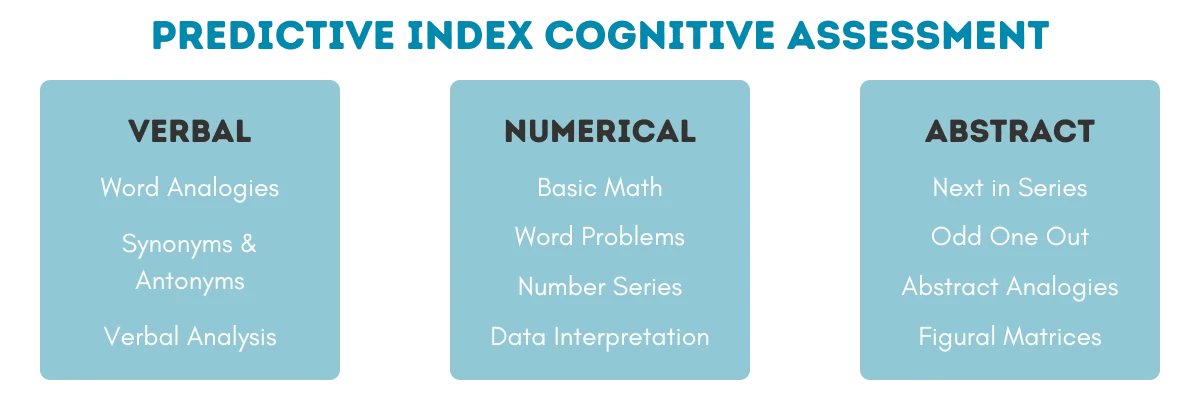
Success Stories 4.6 75 Reviews





rob, 16 Jan
Solid review course that covers the…
Solid review course that covers the relevant topics in good detail





chad, 11 Jan
Great Program, amazing practice simulations
Easy to understand. Passed tests on first time thru.





QUEEN RIGHTEOUS, 07 Jan
Highly recommended.Great instructional…
Highly recommended.Great instructional information. I passed on the first try.





MasterCommand, 14 Nov
Prepterminal. Prepare, practice, execute.
To say that Prepterminal helped me prepare and be ready for the testing phase would be an understatement. At first, looking at the course, I felt overwhelmed with the course material, but the course broke down each subject effectively which made it easier to understand. There were a few issues with some of the audio portion of the testing course, but beyond that, the course was well worth the money.





Abazix LLC, 09 Nov
Would recommend
Study material helped to pass my test on the first try.





Natalia M. Delgado, 08 Nov
Exelent course 100% guaranteed
Exelent course 100% guaranteed
Question Types and Test Format
The PI Cognitive Assessment has a multiple choice question format, the questions are presented in 11 different formats under 3 key section areas. The assessment is timed – you get 12 minutes to solve 50 questions, which gives you 14.4 seconds average to solve each question. This is quite tricky but when you consider the mix of 11 different formats this becomes very hard to overcome.
Let’s take a look at the test sections to get a better idea of the test:
Verbal Reasoning
The Verbal section of the test consists of 16 questions which falls under 3 sub sections. Verbal reasoning refers to your ability to understand and interpret information expressed through language, both written and verbal. It goes beyond vocabulary or fluency, and judges how well you can engage with the given material and decipher the underlying meaning.
This section tests your linguistic skills, contextual understanding, and ability to rapidly acquire new knowledge and implement it.
Check out some sample questions from the verbal section:
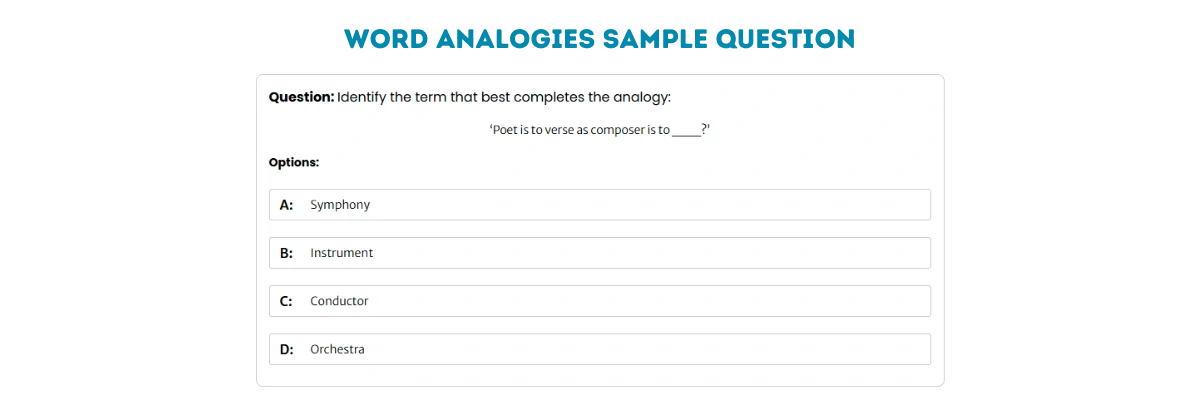
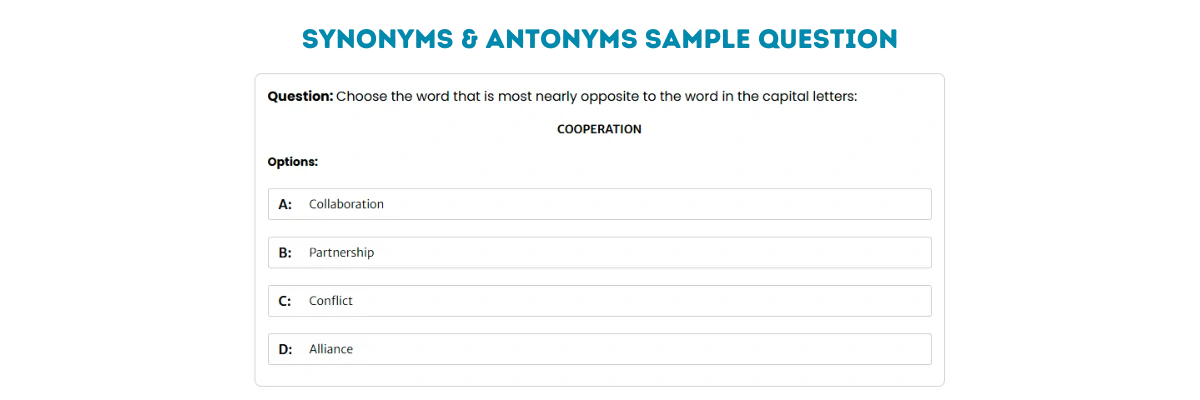

*The verbal samples provided are part of our Predictive Index Prep Course
Numerical Reasoning
The Numerical section of the test consists of 18 questions which falls under 4 sub sections. The ability to deal with numbers quickly and accurately is a valuable skill in any workplace. And the numerical reasoning section puts this front and center as it is all about comprehending numerical patterns systematically and efficiently.
Your grip over fundamental mathematical concepts, pattern recognition, and logical deduction are put to the test here.
Check out some sample questions from the numerical section:
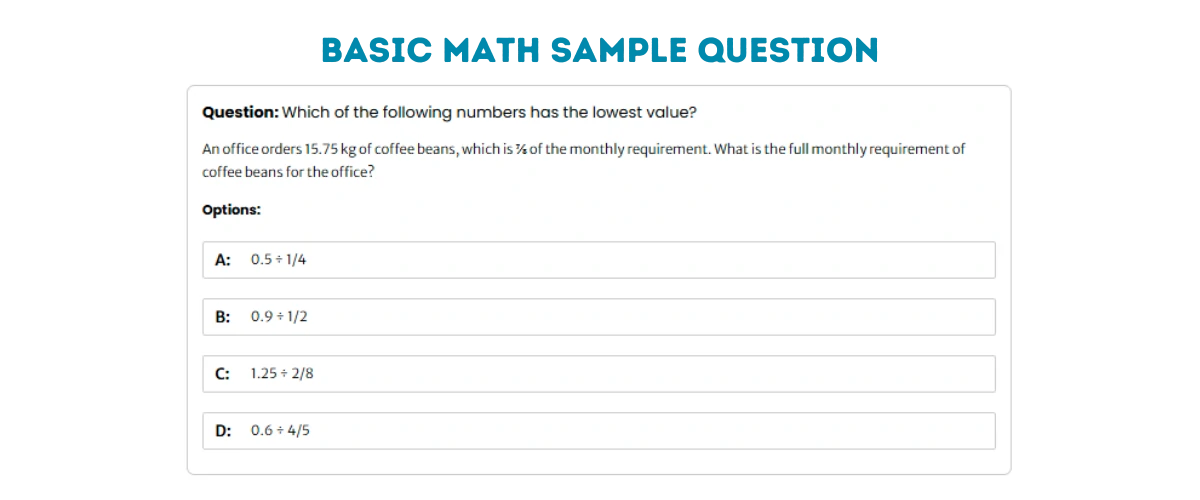
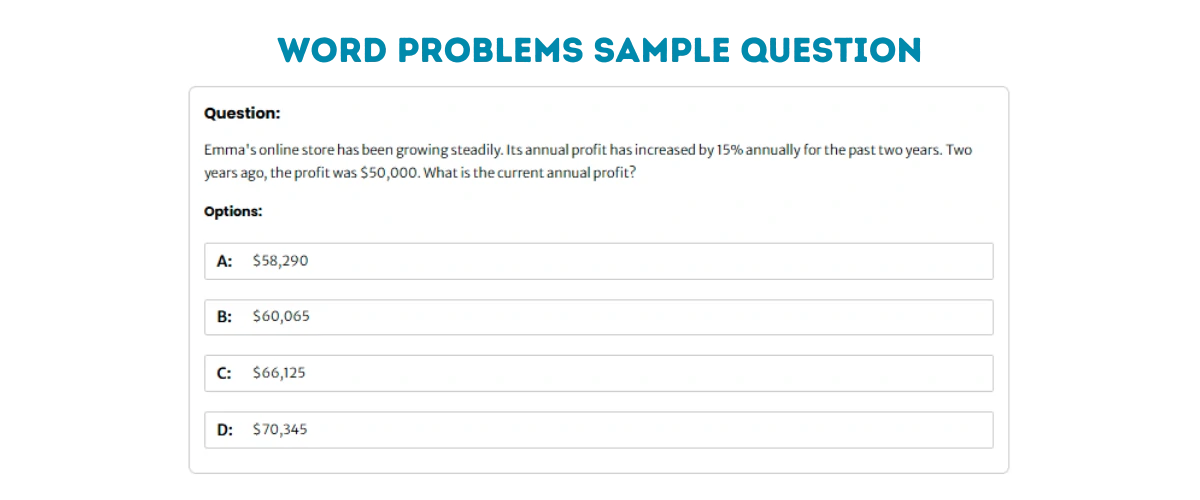
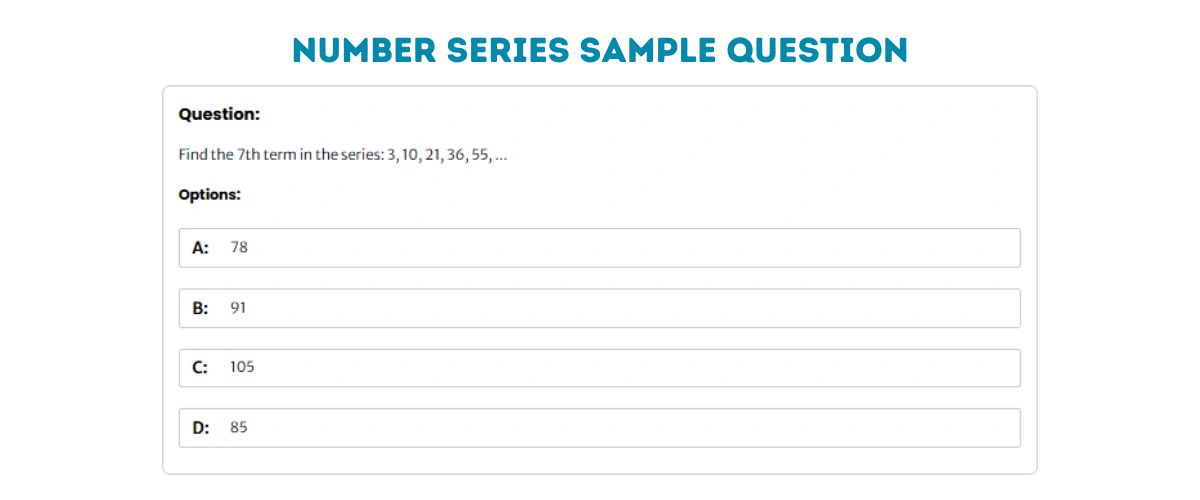
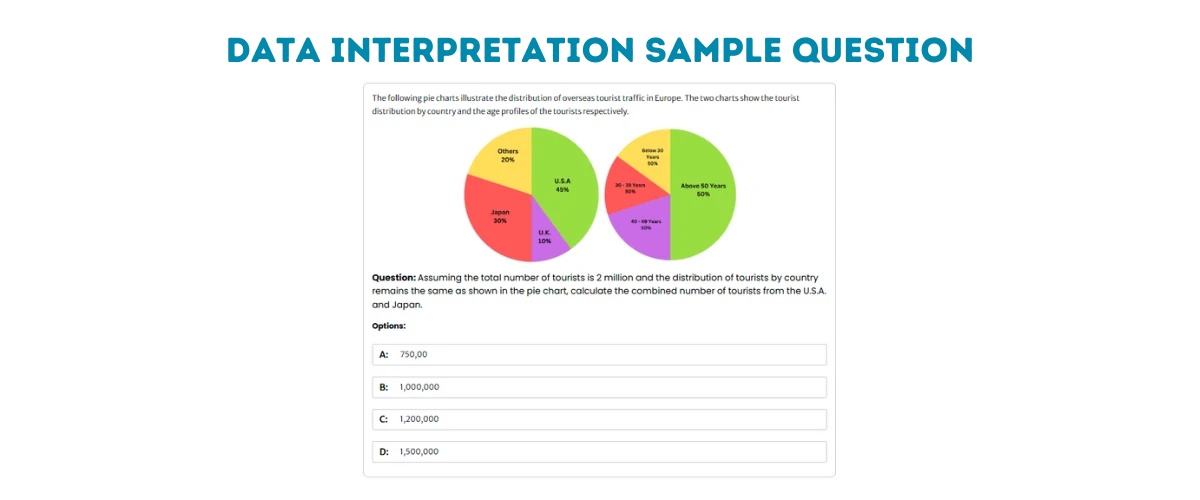
*The numerical samples provided are part of our Predictive Index Prep Course
Abstract Reasoning
The Abstract section of the test consists of 16 questions which falls under 4 sub sections. Abstract Reasoning contrasts with the previous two categories in how it tests your logical reasoning ability. It disregards numerical and verbal components, instead focusing on a visual approach consisting of shape and pattern recognition.
This makes abstract reasoning a test of not just your problem-solving, but also your observational ability and critical thinking. This section includes 4 question types:
Check out some sample questions from the abstract section:
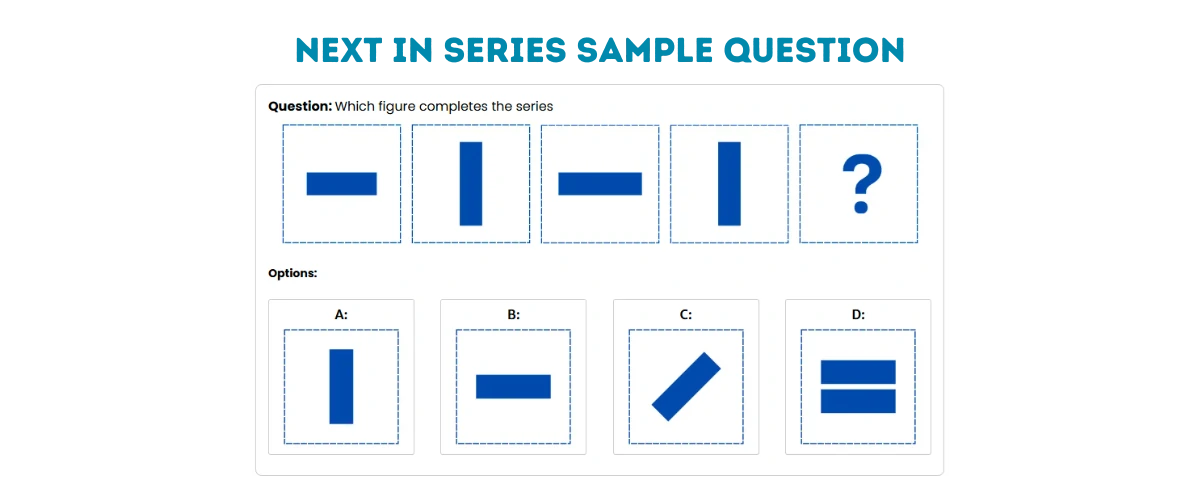
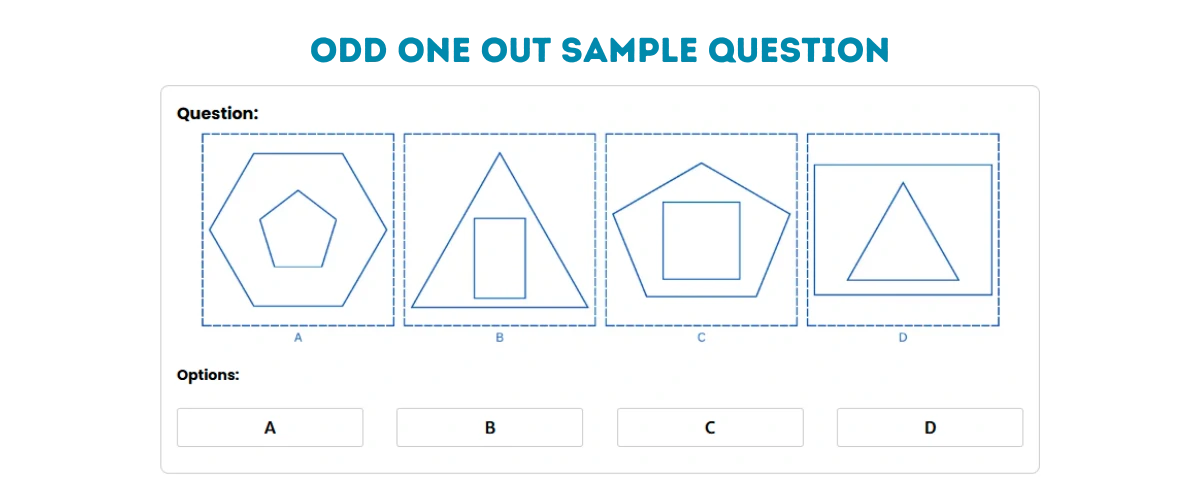
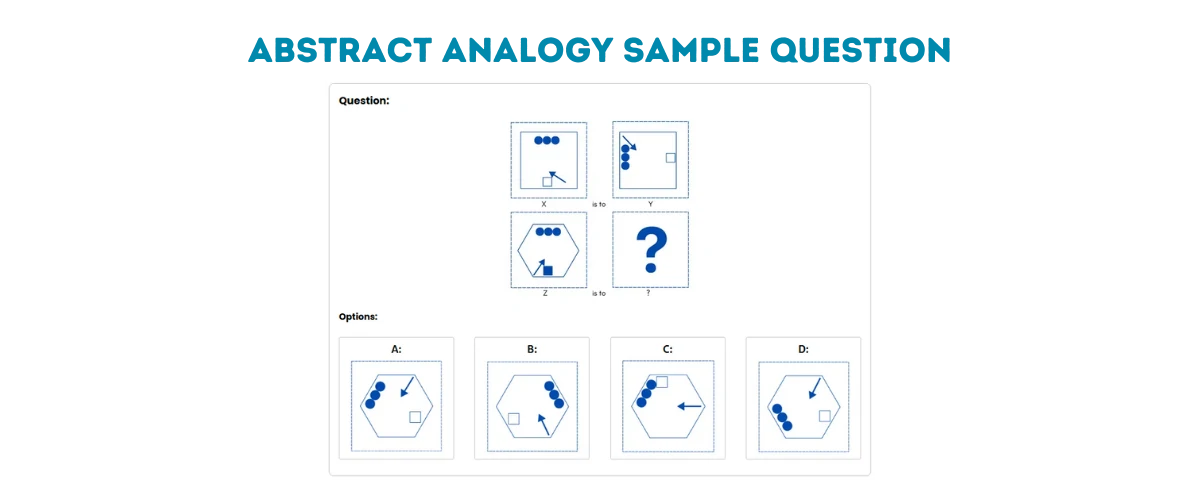
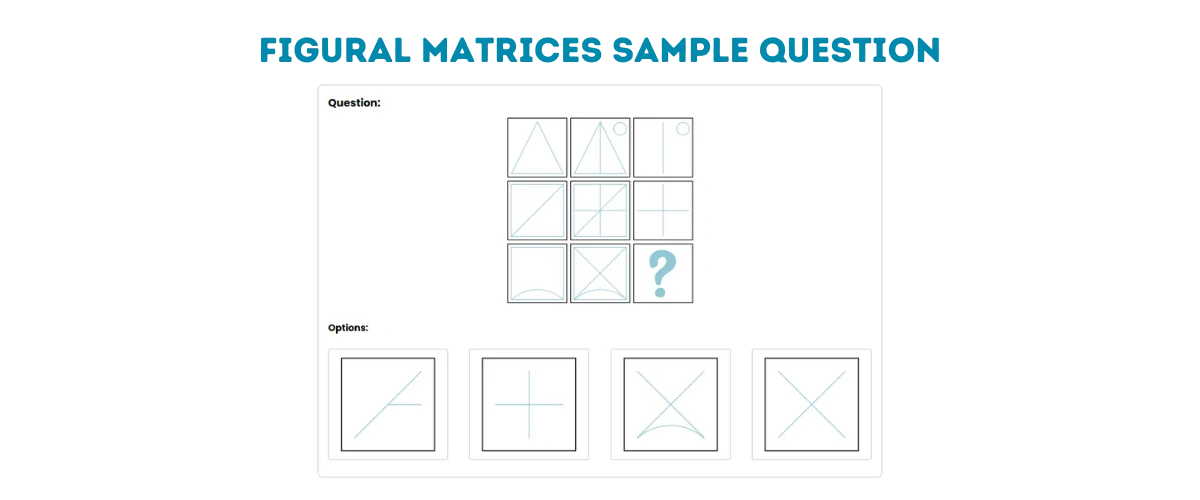
*The abstract samples provided are part of our Predictive Index Prep Course
Success Stories 4.6 75 Reviews





rob, 16 Jan
Solid review course that covers the…
Solid review course that covers the relevant topics in good detail





chad, 11 Jan
Great Program, amazing practice simulations
Easy to understand. Passed tests on first time thru.





QUEEN RIGHTEOUS, 07 Jan
Highly recommended.Great instructional…
Highly recommended.Great instructional information. I passed on the first try.





MasterCommand, 14 Nov
Prepterminal. Prepare, practice, execute.
To say that Prepterminal helped me prepare and be ready for the testing phase would be an understatement. At first, looking at the course, I felt overwhelmed with the course material, but the course broke down each subject effectively which made it easier to understand. There were a few issues with some of the audio portion of the testing course, but beyond that, the course was well worth the money.





Abazix LLC, 09 Nov
Would recommend
Study material helped to pass my test on the first try.





Natalia M. Delgado, 08 Nov
Exelent course 100% guaranteed
Exelent course 100% guaranteed

Predictive Index Cognitive Mastery
Last Updated: Mar 24, 2025
Course Content
 Introduction2 StepsBuy this Course: Get full access to all lessons, practice tests and guides.
Introduction2 StepsBuy this Course: Get full access to all lessons, practice tests and guides. Word Analogies5 StepsBuy this Course: Get full access to all lessons, practice tests and guides.
Word Analogies5 StepsBuy this Course: Get full access to all lessons, practice tests and guides. Synonyms & Antonyms5 StepsBuy this Course: Get full access to all lessons, practice tests and guides.
Synonyms & Antonyms5 StepsBuy this Course: Get full access to all lessons, practice tests and guides. Verbal Analysis4 StepsBuy this Course: Get full access to all lessons, practice tests and guides.
Verbal Analysis4 StepsBuy this Course: Get full access to all lessons, practice tests and guides. Basic Math4 StepsBuy this Course: Get full access to all lessons, practice tests and guides.
Basic Math4 StepsBuy this Course: Get full access to all lessons, practice tests and guides. Word Problems4 StepsBuy this Course: Get full access to all lessons, practice tests and guides.
Word Problems4 StepsBuy this Course: Get full access to all lessons, practice tests and guides. Number Series4 StepsBuy this Course: Get full access to all lessons, practice tests and guides.
Number Series4 StepsBuy this Course: Get full access to all lessons, practice tests and guides. Data Interpretation4 StepsBuy this Course: Get full access to all lessons, practice tests and guides.
Data Interpretation4 StepsBuy this Course: Get full access to all lessons, practice tests and guides. Next in Series4 StepsBuy this Course: Get full access to all lessons, practice tests and guides.
Next in Series4 StepsBuy this Course: Get full access to all lessons, practice tests and guides. Abstract Analogies4 StepsBuy this Course: Get full access to all lessons, practice tests and guides.
Abstract Analogies4 StepsBuy this Course: Get full access to all lessons, practice tests and guides. Odd One Out4 StepsBuy this Course: Get full access to all lessons, practice tests and guides.
Odd One Out4 StepsBuy this Course: Get full access to all lessons, practice tests and guides. Matrices4 StepsBuy this Course: Get full access to all lessons, practice tests and guides.
Matrices4 StepsBuy this Course: Get full access to all lessons, practice tests and guides. Full Size Practice Quiz2 StepsBuy this Course: Get full access to all lessons, practice tests and guides.
Full Size Practice Quiz2 StepsBuy this Course: Get full access to all lessons, practice tests and guides.
Scoring for PI Cognitive Assessment
The score for the PI Cognitive Assessment is calculated in multiple formats. Let’s take a look at all the formats:
- Raw Score: This is the number of correct answers you got out of 50 questions.
- Scaled Score: The raw score is then converted to scaled score which ranges from 100 to 450. This is done to ensure consistency amongst revisions of the test or if the candidate received extended time.
- Percentile Score: The scaled score is then compared across a norm group (test takers in similar field & job roles).
Why Choose Our PICA Prep Course?
All too often qualified candidates fail to get past the hurdle of the Predictive Index test because of a lack of familiarity with the test format and questions. At Prepterminal, we overcome this with a host of features designed to ensure you put your best foot forward in proving your suitability for the job.

Comprehensive Study Guides: Our course helps you master the ins and outs of the PI Cognitive Assessment. We leave no detail untouched, from in-depth lessons to insider tips. Regardless of your current proficiency level, by the end of this course, you will be able to tackle the PICA with confidence.

Extensive Practice Tests: Theory is only half the challenge. So our lessons are followed by meticulously crafted practice quizzes that simulate the conditions of the test. We offer timed and untimed tests with varying levels of complexity, so you can always keep improving.

Detailed Explanations: Both our lessons and practice quizzes come equipped with detailed explanations. These help you keep track of your progress and put your learning into practice.

Flexible Learning: Study at your own pace. Our course is accessible on multiple devices so that the learning never stops.
Success Stories 4.6 75 Reviews





rob, 16 Jan
Solid review course that covers the…
Solid review course that covers the relevant topics in good detail





chad, 11 Jan
Great Program, amazing practice simulations
Easy to understand. Passed tests on first time thru.





QUEEN RIGHTEOUS, 07 Jan
Highly recommended.Great instructional…
Highly recommended.Great instructional information. I passed on the first try.





MasterCommand, 14 Nov
Prepterminal. Prepare, practice, execute.
To say that Prepterminal helped me prepare and be ready for the testing phase would be an understatement. At first, looking at the course, I felt overwhelmed with the course material, but the course broke down each subject effectively which made it easier to understand. There were a few issues with some of the audio portion of the testing course, but beyond that, the course was well worth the money.





Abazix LLC, 09 Nov
Would recommend
Study material helped to pass my test on the first try.





Natalia M. Delgado, 08 Nov
Exelent course 100% guaranteed
Exelent course 100% guaranteed

Created by: Michael Learner
Psychometric Test Expert
520 students, 4.6, 75 Reviews
Hey, I’m Michael, PrepTerminal’s Predictive Index expert. I am here to help you with any questions or concerns you may have about the Predictive Index Cognitive Assessment. Feel free to contact me at [email protected].
